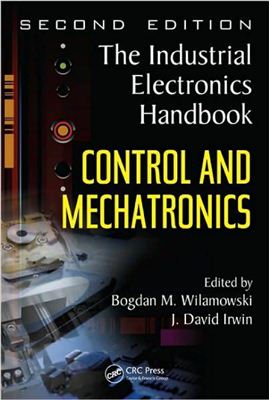2nd Edition. CRC, 2011. 728 p. ISBN:1439802874
The successful construction of industrial systems requires an understanding of the various aspects of control theory. This area of engineering, like that of power electronics, is also seldom covered in depth in engineering curricula at the undergraduate level. The goal of this volume from The Industrial Electronics Handbook, Second Edition is to present many of the concepts of control in a manner that facilitates its understanding by practicing engineers or students who would like to lea about the applied aspects of control systems.
The book is divided into several sections. Section One is devoted to control system analysis, while Section 2 discusses control system design. Various techniques used for the analysis and design of control systems are described and compared. Section 3 is conceed with Estimation, Observation, and Identification, and is dedicated to the identification of the objects to be controlled. The importance of this section stems from the fact that in order to efficiently control a system, it must first be clearly identified. In an industrial environment it is typically difficult to experiment with production lines. As a result, it is imperative that good models are developed to represent these systems. This modeling aspect of control is covered in Section
4. Many mode factories have more robots than humans. Therefore, the importance of mechatronics and robotics cannot be over emphasized. The various aspects of robotics and mechatronics are described in the last section of this volume.
The successful construction of industrial systems requires an understanding of the various aspects of control theory. This area of engineering, like that of power electronics, is also seldom covered in depth in engineering curricula at the undergraduate level. The goal of this volume from The Industrial Electronics Handbook, Second Edition is to present many of the concepts of control in a manner that facilitates its understanding by practicing engineers or students who would like to lea about the applied aspects of control systems.
The book is divided into several sections. Section One is devoted to control system analysis, while Section 2 discusses control system design. Various techniques used for the analysis and design of control systems are described and compared. Section 3 is conceed with Estimation, Observation, and Identification, and is dedicated to the identification of the objects to be controlled. The importance of this section stems from the fact that in order to efficiently control a system, it must first be clearly identified. In an industrial environment it is typically difficult to experiment with production lines. As a result, it is imperative that good models are developed to represent these systems. This modeling aspect of control is covered in Section
4. Many mode factories have more robots than humans. Therefore, the importance of mechatronics and robotics cannot be over emphasized. The various aspects of robotics and mechatronics are described in the last section of this volume.

